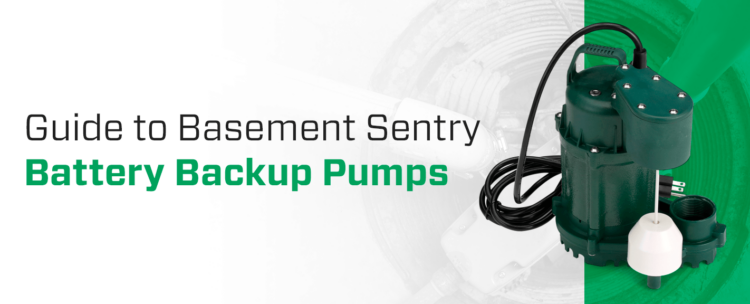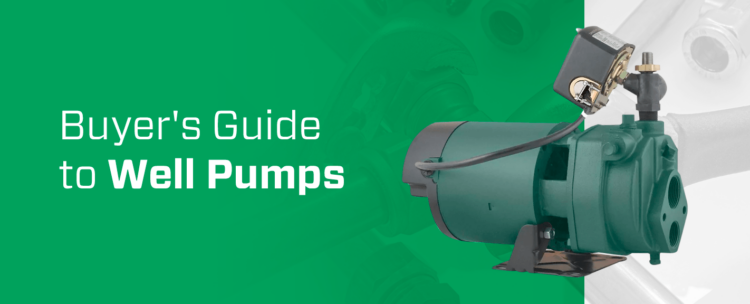
Wastewater management may not be a dinner table topic, but it’s crucial to maintaining a clean and healthy living environment. The effluent pump is at the heart of this often-overlooked process, a powerful pump that ensures wastewater flows efficiently and responsibly.
In this effluent pump buyers guide, you’ll learn all about an effluent pump’s roles, benefits and applications.
What Is an Effluent Pump?
At its core, an effluent pump is designed to handle the semi-clear, partially treated wastewater that emerges from a septic tank or aerobic treatment unit. This water, often called effluent, contains fewer solids than raw sewage but still requires careful handling and transport to prevent environmental contamination.
Key functions of an effluent pump include:
- Efficient transport: Effluent pumps are engineered to move swiftly and efficiently. They ensure the partially treated wastewater is pumped out of the tank or treatment unit, preventing backups and overflows.
- Preventing contamination: By swiftly transporting effluent to the designated disposal area, effluent pumps help safeguard your property and the environment from potential contamination.
- Maintaining system health: Regularly removing effluent from septic tanks or treatment units is essential for the overall health and longevity of the wastewater treatment system.
Effluent Pump Considerations: Types and Operation
Effluent pumps come in various types, including submersible and pedestal models. Submersible pumps are placed directly in the effluent or wastewater, while pedestal pumps are installed above the waterline. The choice between these types depends on the specific requirements of your wastewater system and the available space.
Submersible Effluent Pumps
These are the most common types of effluent pumps that are designed to be submerged in wastewater. Here’s a breakdown of how they work:
- Intake: The pump is positioned at the bottom of the wastewater tank, either in a septic tank or an aerobic treatment unit. It has an intake that draws in effluent from the tank.
- Impeller action: Inside the pump, there’s an impeller — a rotating component with vanes or blades. The impeller spins rapidly when the pump is activated, creating effluent flow.
- Pressure build-up: As the impeller spins, it creates a low-pressure zone, which causes effluent to be drawn into the pump.
- Discharge: The spinning impeller then pushes the effluent out through a discharge pipe, directing it toward the designated disposal or treatment area.
Pedestal Effluent Pumps
These pumps differ in design from submersible models but achieve the same goal of moving effluent effectively. Here’s how they operate:
- Positioning: Pedestal effluent pumps are installed above the waterline of the tank, with only the base submerged. This design allows for easier access and maintenance.
- Intake and impeller: Like submersible pumps, pedestal pumps also have an intake and an impeller. The impeller draws effluent from the tank and propels it upward.
- Pressure build-up: As the impeller rotates, it creates the necessary pressure to move the effluent upward and out of the tank.
- Discharge: The effluent is discharged through a pipe, typically connected to a sewage or drainage system.
In both submersible and pedestal effluent pumps, the impeller is the driving force behind the movement of wastewater. These pumps are engineered to handle semi-clear, partially treated wastewater efficiently, ensuring it flows away from your home to the appropriate disposal or treatment location.
What Is an Effluent Pump Used for?

Though often hidden from view, effluent pumps play a versatile role in managing wastewater in various settings. As mentioned, their primary function is moving partially treated wastewater from a septic tank to a designated disposal area.
However, their applications extend far beyond this fundamental role.
- Residential septic systems: The system efficiently transports effluent from the septic tank to a drain or leach field for further treatment and absorption into the soil. Without an effluent pump, these systems would struggle to function correctly, potentially leading to backups and overflows.
- Aerobic treatment units: In advanced wastewater treatment systems like aerobic treatment units, effluent pumps are indispensable. These units use aerobic bacteria to treat wastewater further before it is released into the environment.
- Lift stations: Lift stations are employed in areas with challenging terrain or when wastewater must be pumped uphill.
- Commercial and industrial settings: Effluent pumps find applications in commercial and industrial facilities, particularly those that generate wastewater with solid content. These pumps efficiently move wastewater to holding tanks or treatment facilities for proper disposal.
- Graywater recycling: In some eco-conscious setups, effluent pumps recycle graywater — wastewater from sinks, showers and washing machines. These pumps transport graywater to filtration and treatment systems, allowing it to be reused for landscape irrigation.
Benefits of an Effluent Pump
These devices offer many benefits, contributing to efficient and reliable wastewater handling. Here are some of the advantages of having an effluent pump in your wastewater system:
- Prevents backups and overflows: By swiftly removing partially treated wastewater, or effluent, effluent pumps avoid the accumulation of excess water, preventing backups and overflows.
- Reduces environmental impact: Effluent pumps aid in the proper and controlled distribution of wastewater, minimizing the risk of environmental pollution.
- Supports graywater recycling: In eco-conscious setups, effluent pumps facilitate the recycling of graywater for non-potable uses like landscape irrigation. This sustainable practice conserves water resources and reduces the strain on municipal sewage systems.
- Ensures consistent water features: In water features and fountains, effluent pumps maintain consistent water circulation, preventing stagnation and enhancing visual appeal. They also support the filtration and treatment of water in these features.
- Longevity of septic systems: The pumps contribute to the longevity and efficiency of septic systems by preventing the accumulation of solids and excess water.
- Reliable wastewater management: An effluent pump’s primary benefit is reliable wastewater management. It ensures wastewater is efficiently transported, treated and disposed of, preventing system failures, backups and potential health hazards.
Learn More About How Zoeller Can Help

With decades of expertise, Zoeller continues to lead the way in developing sump and effluent pumps that set the gold standard for performance and dependability. Our commitment to innovation and sustainability is evident in the efficient operation of these pumps, contributing to cleaner environments and more efficient wastewater systems.
With our solutions, your wastewater flows smoothly, efficiently and responsibly, leaving you with peace of mind and a cleaner, more sustainable system. Find out where to buy our effluent pumps today.



